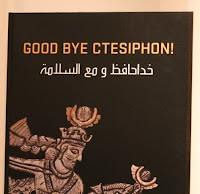Today I visited a unique exhibition at Rotterdam's World Museum: "The Persians, Warriors and Poets". It's a joint project between this Dutch museum and Stibbert Museum in Italy.
The exhibition is mostly focused on the Persian weapons in Safavid era; ca. 16th and 17th century. This era is quite important in the history of Persia (or Iran). Safavid kings reunited the country and Persian art (except for music) also blossomed in this period.
But now many Persians do not show interest in Safavid dynasty. It seems the main reason is the current political situation in Iran. The current government of Iran is Shia and Safavid kings were also Shia and cited Shia Islam as the official religion of Persia when they came to power; different from the rest of Islamic countries which are mostly Sunni. Another important point which should not be forgotten is the Persians were mostly Zoroastrian before the Arabs' attack to their country in 7th AD.
Anyway what attracted my attention at the exhibition is not weapons or religious/national stuff; it's a very cute belt's buckle. Very artistic! I made a photo of that which you can see in the beginning of this page. It has been made around 1800 AD by a Persian artist. I also love the color, a peaceful blue!
Today also BBC Persian TV aired an informative report from the exhibition. You can watch it here.
Rotterdam's World Museum has also published the catalogue of the exhibition as a superb book.
Rotterdam's World Museum has also published the catalogue of the exhibition as a superb book.










































